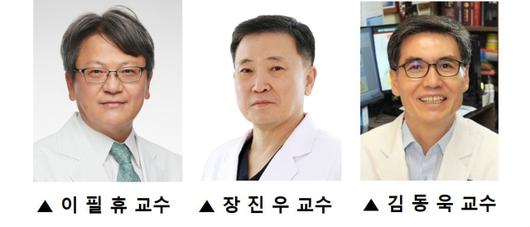■Joint research team of Severance Hospital and Korea University Anam Hospital
Embryonic stem cell derived midbrain dopamine cell therapy
Interim results of first clinical trial in 12 patients with Parkinson’s disease
S-Biomedics is responsible for manufacturing and supplying treatments.
A study showed that Parkinson’s disease patients who received nerve cell treatment using embryonic stem cells improved enough to play badminton and table tennis within a year.
The joint research team of Professor Pilhyu Lee of the Department of Neurology at Severance Hospital and Jinwoo Jang, Professor of Neurosurgery at Korea University Anam Hospital, transplanted embryonic stem cell-derived midbrain dopaminergic nerve cell therapy into 12 patients with Parkinson’s disease and observed the results of the surgery one year later and found this effect. It was announced on the 15th that it had been confirmed.
Parkinson’s disease is a degenerative disease in which nerve cells that secrete dopamine in the brain gradually disappear, causing problems with motor control. As the disease progresses, walking becomes slower and symptoms such as gait freezing, where the feet momentarily stop as if they are frozen to the ground while walking or when changing directions, appear, which greatly interferes with daily life. No treatment has yet been developed to regenerate dopamine neurons or stop the loss of dopamine neurons. Currently, the best way to relieve symptoms is to supplement the lack of dopamine or take drugs that enhance the effects of dopamine. However, dopamine drug treatment also has limitations in that its efficacy decreases and side effects increase over time.
The research team differentiated embryonic stem cells into ‘neural progenitor cells’ (cells in the stage before growing into nerve cells) that secrete dopamine and then injected them into the brains of patients participating in the clinical trial. The cell therapy used for these patients was developed by Kim Dong-wook, a professor in the Department of Physiology at Yonsei University College of Medicine, and was manufactured and supplied by S-Biomedix (304360), a domestic company. The research team divided the subjects into two groups and administered low doses (3.15 million cells) or high doses (6.3 million cells) and checked the progress of three people in each group after one year. As a result of measuring the Hohenya scale, which classifies Parkinson’s disease symptoms into levels 1 to 5 according to severity, those who received low doses improved by an average of 19.4% from level 3.7 to level 3. Those who received high doses improved by an average of 44.4% from stage 3.7 to stage 2. The higher the level of the Hohenya scale, the more severe the symptoms. This means that patients receiving high doses have improved from severe Parkinson’s condition to the initial condition.
When looking at the Parkinson’s Assessment Scale, which measures objective motor performance (higher scores mean more severity), low-dose recipients decreased by 12.7 points and high-dose recipients decreased by 13 points, improving by 22.7% and 25.3%, respectively. The side effect of freezing gait disappeared in all three high-dose recipients and one out of two low-dose recipients. There was also a patient who showed a 40.7% improvement in Parkinson’s rating scale by 22 points in just one year. In particular, a patient who had difficulty walking due to poor drug efficacy while receiving dopamine medication treatment began to play badminton and table tennis within a year of treatment, making daily life more convenient, showing the potential as a game changer in the treatment of Parkinson’s disease in the future. This is the research team’s evaluation.
To date, mild bleeding in surrounding areas unrelated to the transplant site was observed in 1 of 12 patients, but there were no unusual neurological abnormalities or side effects. The research team plans to conduct follow-up observations for up to two years after transplantation according to the original clinical trial plan. Professor Kim said, “It is an amazing change for a patient who had suffered from Parkinson’s disease for a long time to now enjoy playing badminton and walking,” and added, “We will contribute to helping patients with Parkinson’s disease regain a healthy life with fundamental treatment.”
Medical reporter Ahn Kyung-jin [email protected]
[ⓒ 서울경제, 무단 전재 및 재배포 금지]
The categories of this article follow the classification of media outlets.
The category an article belongs to is classified by the media company.
News organizations can classify an article into two or more categories.

